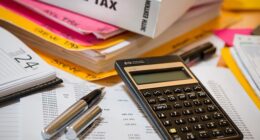Flow represents the rate of change or movement over time. Stock refers to the quantity accumulated or stored at a specific point in time.
TL;DR Flow Vs. Stock
Flow refers to the movement or rate at which something occurs or is produced over a specific period of time. It can represent the continuous process of inputs and outputs within a system.
Stock represents the accumulation or storage of something at a particular point in time. It reflects the quantity of goods, resources, or assets that are held at any given moment.
What is flow?
Flow, in the context of economics, refers to the movement or transfer of goods, services, or money within an economy. It represents the dynamic aspect of economic activity that occurs over a specific period of time. Think of flow as a continuous stream, constantly shifting and evolving.
What is stock?
Stock refers to the quantity of a particular item or resource that is available at a given point in time. It can refer to physical goods, such as inventory in a warehouse, or intangible assets, like shares of a company’s stock.
Flow Vs. Stock – Key differences
| Aspect | Flow | Stock |
|---|---|---|
| Definition | Represents rate of change over time | Refers to quantity at a point in time |
| Nature | Dynamic | Static |
| Example | Water flowing in a river | Water in a reservoir |
| Measurement Units | Units per time (e.g., liters/sec) | Total quantity (e.g., liters) |
| Focus | Emphasizes movement | Emphasizes accumulation |
| Derivative | Rate of change (d/dt) | Change in quantity (Δ) |
| Influence | Affects stock accumulation | Influenced by flows |
In economics, flow and stock are fundamental concepts that provide valuable insights into the workings of an economy.
Flow refers to the rate of change of a variable over a specific period, such as income, investment, or production per year. It is dynamic and reflects ongoing economic activities.
Stock represents the quantity of a variable accumulated at a specific point in time, regardless of the time frame involved. Examples of economic stocks include the total money supply, national wealth, or capital stock.
Stocks provide a snapshot of the economy’s current state and are static in nature. Understanding the distinction between flow and stock is essential for policymakers and economists as they analyze economic trends, design effective policies, and assess the overall health and performance of an economy.
Image Credits
Featured Image By – Photo by Stanislav Kondratiev on Pexles








